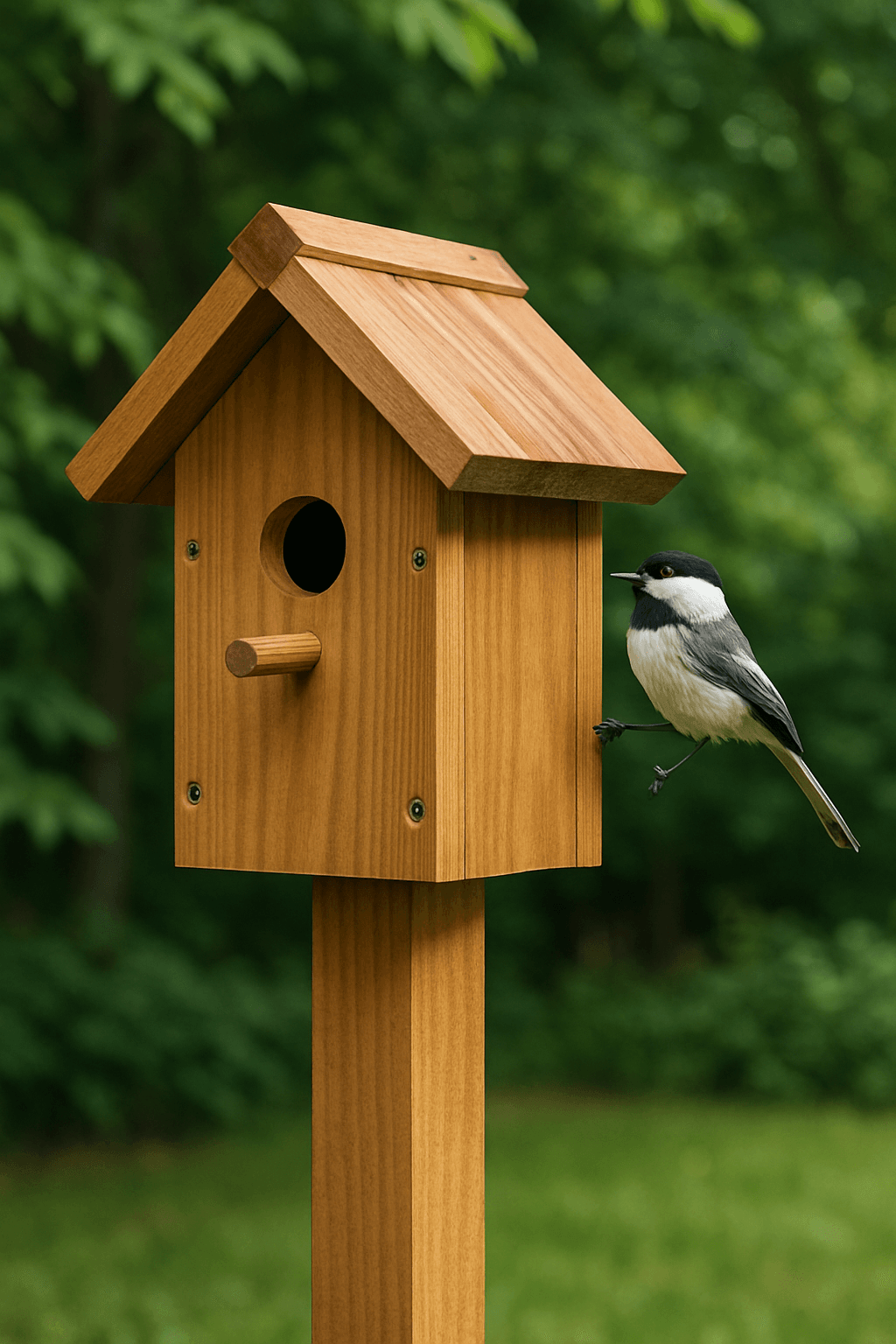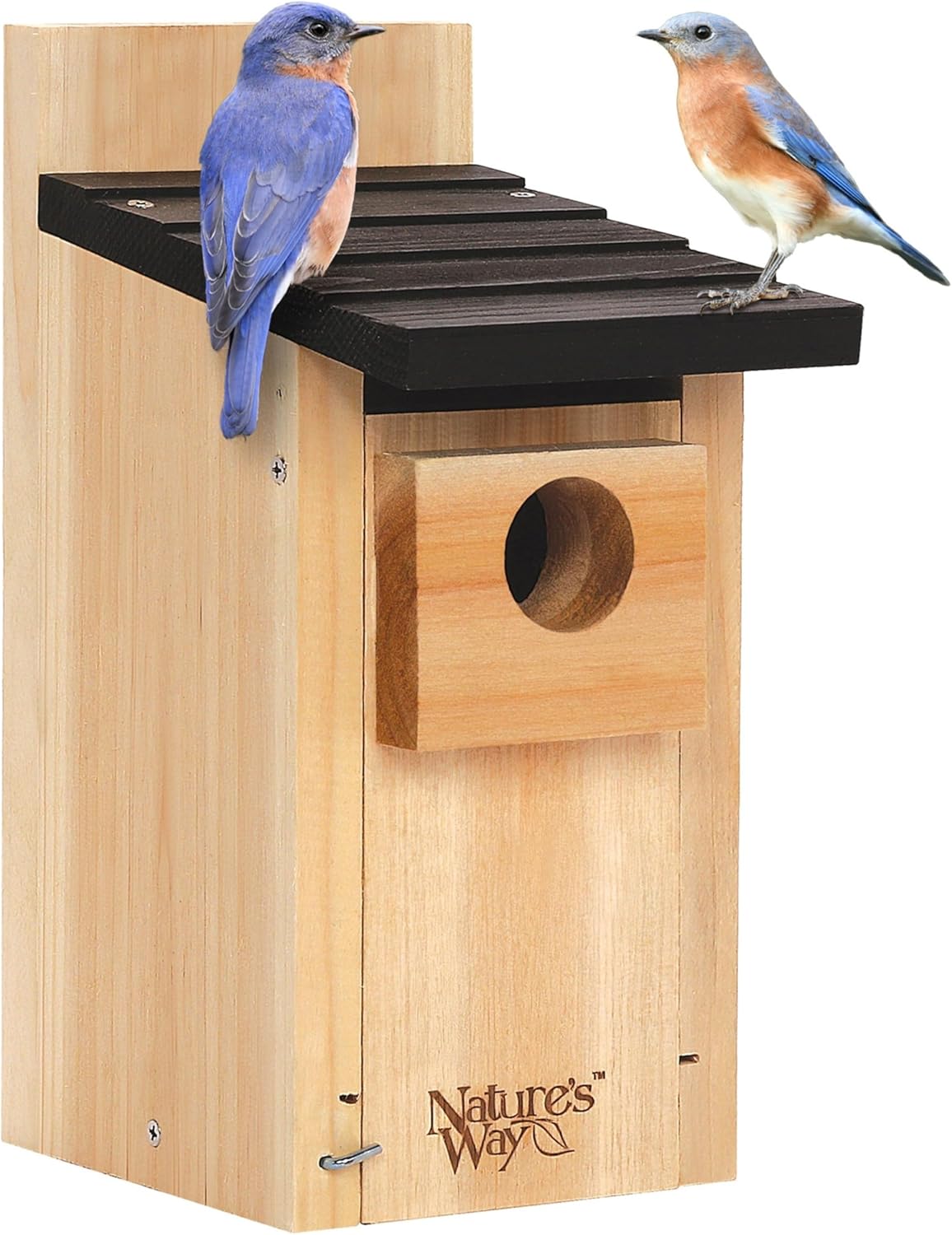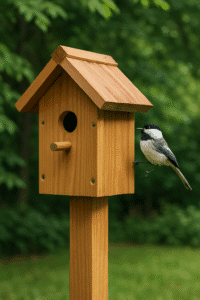How to Get Birds to Use a Birdhouse: The Expert’s Troubleshooting Guide

It’s a story I hear all the time. A well-meaning nature lover buys a birdhouse, hangs it with care, and waits. And waits. And waits. The seasons pass, and the house remains empty, a silent monument to good intentions. The initial excitement fades into a nagging question: “Why won’t birds use my birdhouse?” It’s a frustrating experience, and one I know well from my early days of backyard birding.
My first birdhouse failure was a classic. I nailed a beautifully painted box to the big oak tree in my front yard, right where I could see it from my window. I imagined bluebirds flocking to it. In reality, the only creature that ever showed interest was a squirrel who chewed the entrance hole into a gaping maw. The birds knew what I didn’t: that my lovingly placed house was a death trap. It took years of study, observation, and a lot of trial-and-error to understand that attracting birds isn’t about hope; it’s about science. It’s about seeing your yard not as a garden, but as a complex ecosystem with its own set of rules.
This guide is the troubleshooting manual I wish I’d had all those years ago. We’re going to systematically diagnose every potential reason your birdhouse might be empty and provide concrete, expert-approved solutions to fix them. If you follow these steps, you will transform your empty box into a coveted piece of avian real estate.
The Quick Answer: The 5 Keys to Success
If your birdhouse is empty, it’s almost certainly failing in one of these five critical areas. Addressing them is the fastest way to get results.
- Safety First: Is the house mounted on a metal pole with a predator baffle? If it’s on a tree or fence without one, birds instinctively know it’s unsafe.
- Correct House for the Correct Bird: Does the entrance hole size match the native birds you want to attract? Is the house made of untreated wood with no perch?
- Location, Location, Location: Is the house in the right habitat (open field vs. wooded edge)? Is it at the correct height and facing east?
- A Welcoming Neighborhood: Does your yard provide nearby food, clean water, and native plants for cover and insect food?
- Patience and Timing: Was the house put up before the spring nesting season? It can sometimes take birds a full year to discover and trust a new house.
The Cardinal Rule: A Birdhouse is Survival Equipment, Not a Garden Ornament
This is the most important mindset shift you can make. When a bird, like a bluebird or a chickadee, chooses a nesting site, it is making the single most important decision of its adult life. A good choice means its genetic legacy continues. A bad choice means its entire brood is lost to a predator or the elements. They have evolved over millions of years to be incredibly discerning about what makes a cavity safe. They are not looking at your birdhouse and thinking, “What a charming addition to the garden.” They are looking at it and asking:
- “Can a raccoon climb up to this and reach inside?”
- “Will my chicks bake in the afternoon sun?”
- “Will this fill with water during a thunderstorm?”
- “Is this entrance hole small enough to keep bigger birds out?”
Every step in this guide is about helping you answer “yes” to the bird’s internal safety checklist. When you do that, you’ll have tenants.
The Troubleshooting Checklist: A Diagnostic Approach
Problem #1: Your House is Wrong for the Bird
Many commercially available “birdhouses” are designed to appeal to humans, not birds. Bright colors, cute perches, and fancy metal roofs are red flags. Your house must meet the biological needs of the birds.
Your Action Plan:
- Check the Material: The house should be made of untreated, natural wood like cedar or pine. Avoid plastic or metal, which can fatally overheat. Our birdhouse reviews exclusively feature properly designed houses.
- Measure the Entrance Hole: This is critical. The hole size determines your tenants.
- 1 1/8″: Perfect for Wrens, Chickadees, Nuthatches.
- 1 1/4″: For Titmice and Downy Woodpeckers.
- 1 1/2″: The standard for Eastern Bluebirds and Tree Swallows.
- Remove the Perch: If your birdhouse has a perch below the hole, remove it. Native cavity-nesters do not need it. It only serves as a handle for predators to cling to while raiding the nest.
- Ensure Proper Drainage and Ventilation: A good house must have drainage holes in the floor and ventilation slots near the roof.
Problem #2: Your Location is Wrong for the Bird
You can have the world’s best bluebird house, but if you place it in a dense forest, a bluebird will never use it. You must match the location to the bird’s preferred habitat.
Your Action Plan:
- Match Habitat to Species:
- For Bluebirds & Tree Swallows: Mount the house on a pole in the middle of an open lawn or field, facing a patch of grass. They need open space to hunt insects.
- For Chickadees, Titmice, & Nuthatches: Place the house on the edge of a wooded area or in a backyard with mature trees. They need the security of nearby cover.
- For Wrens: These adaptable birds love “messy” areas. Place their house near a brush pile, a thicket of shrubs, or a garden.
- Check the Height: For most common backyard birds, a height of 5 to 10 feet is ideal. Too low, and it’s vulnerable to ground predators. Too high, and many species won’t be interested.
- Check the Direction: The entrance should face east. This avoids the hot afternoon sun and shields the nest from prevailing winds and rain. A south-facing house can work if it gets afternoon shade, but a west-facing house is almost always a mistake.
Problem #3: Your Setup Isn’t Safe (This is the big one!)
This is the mistake that I and countless others make. We underestimate the threat of predators. Birds do not. They can sense a vulnerable location from a mile away. If your house is nailed to a tree, a fence, or a post without protection, it is a ticking time bomb.
Your Action Plan:
- GET IT ON A POLE: Take the house off the tree or fence. Remount it on a smooth metal pole in the correct habitat. A pole is the first and most critical line of defense. Our guide to the best birdhouse poles shows you what to look for.
- INSTALL A BAFFLE: A pole alone is not enough. Raccoons can easily climb them. A stovepipe or cone baffle placed on the pole below the house is what makes it truly predator-proof. This single piece of equipment will increase your success rate more than anything else.

The Non-Negotiable Solution: A Pole and Baffle System
If you are serious about attracting nesting birds, investing in a proper mounting system is mandatory. This JAOTREL Pole and Baffle Combo is the exact setup I use for my own nest boxes. The sturdy, sectional steel pole allows you to place the house in the perfect spot, and the wrap-around baffle is a fortress against raccoons, snakes, and squirrels. Don’t think of this as an accessory; think of it as an integral part of the birdhouse itself. This system is the difference between an empty house and a successful nest.
Check Price on AmazonRemember, the goal isn’t just to get birds to use a birdhouse; it’s to ensure that if they do, their young will survive to fledge. An unprotected house is often a death trap, and it’s better to have an empty house than a failed nest.
Problem #4: Your Yard Isn’t Appealing Enough
A great house in a great location is wonderful, but birds also need resources. A sterile lawn with no food or water is like a beautiful home with no grocery store or running water for miles. You need to create a supportive neighborhood.
Your Action Plan:
- Provide a Water Source: A clean, shallow birdbath is a magnet for all kinds of birds, including those looking for a place to nest.
- Offer High-Quality Food: While nesting birds primarily feed their young insects, the parents still need food. A nearby feeder offering the best bird seed can help them conserve energy. Keep feeders at least 20 feet from the nest box.
- Plant Natives: Native plants, shrubs, and trees provide cover from predators and, most importantly, they host the native insects and caterpillars that 96% of songbirds feed their young. A yard full of native plants is a yard full of baby bird food.
- Leave Nesting Materials: Don’t be too tidy in the spring. Leave some small twigs, dry grasses, and pine needles for birds to use in their construction.

Combine Great Placement with a Great House: Nature’s Way Cedar Box
Once you have the perfect, safe location, you need a house that meets a bird’s high standards. This Nature’s Way Bluebird Box is a perfect example of a house designed for birds, not people. It’s made of thick, insulating cedar, has a predator-resistant 1.5″ entry hole, superior drainage and ventilation, and opens easily for cleaning. It has no perch. Pairing a house of this quality with the pole and baffle system creates the ultimate safe and desirable home for bluebirds and other cavity-nesters.
Check Price on AmazonFrequently Asked Questions (FAQ)
When should I put up my birdhouse?
The best time is in the fall or winter. This gives the house time to weather and lose its human scent. Birds often begin scouting for nest sites months before they actually build, following their internal 24-hour clock and seasonal rhythms, so having it up early is a huge advantage.
Should I clean out the birdhouse every year?
Yes, absolutely. Once a brood has fledged, the old nest should be removed. It can be full of parasites and bacteria that could harm the next occupants. A clean house is also essential for birds seeking winter shelter, which you can learn more about in our article on whether birds sleep in the same place every night.
Invasive House Sparrows are taking over my box. What do I do?
House Sparrows are a serious problem. The first step is to make sure your birdhouse has no perch and the hole is the correct size. If they persist, you must be diligent about removing their nesting material every few days. Do not let them nest successfully. For bluebird boxes, a “sparrow spooker” can be an effective deterrent once the female has laid her first egg.
I’ve done everything right and it’s still empty! What now?
If you’ve run through this entire checklist and are confident your setup is perfect, the answer is often just patience. It can take a new pair of birds a while to establish territory in your yard. As long as you know your house is safe and well-placed, leave it be. Nature will eventually find its way. For more ideas, you can review our master guide on how to get birds to nest in your birdhouse.
Conclusion: Becoming a Responsible Bird Landlord
The journey from an empty birdhouse to a successful nest is a lesson in empathy. It’s about learning to see the world from a completely different perspective—one where a smooth pole is a lifesaver and a dense shrub is a fortress. By systematically addressing the core needs of safety, design, location, and resources, you are doing more than just putting up a box; you are becoming a responsible steward of your local ecosystem.
Work through this guide, make the necessary changes, and be patient. The reward—the day you see a cautious bird finally claim your house, build its nest, and successfully raise a family—is one of the most profound and satisfying experiences a nature lover can have.

